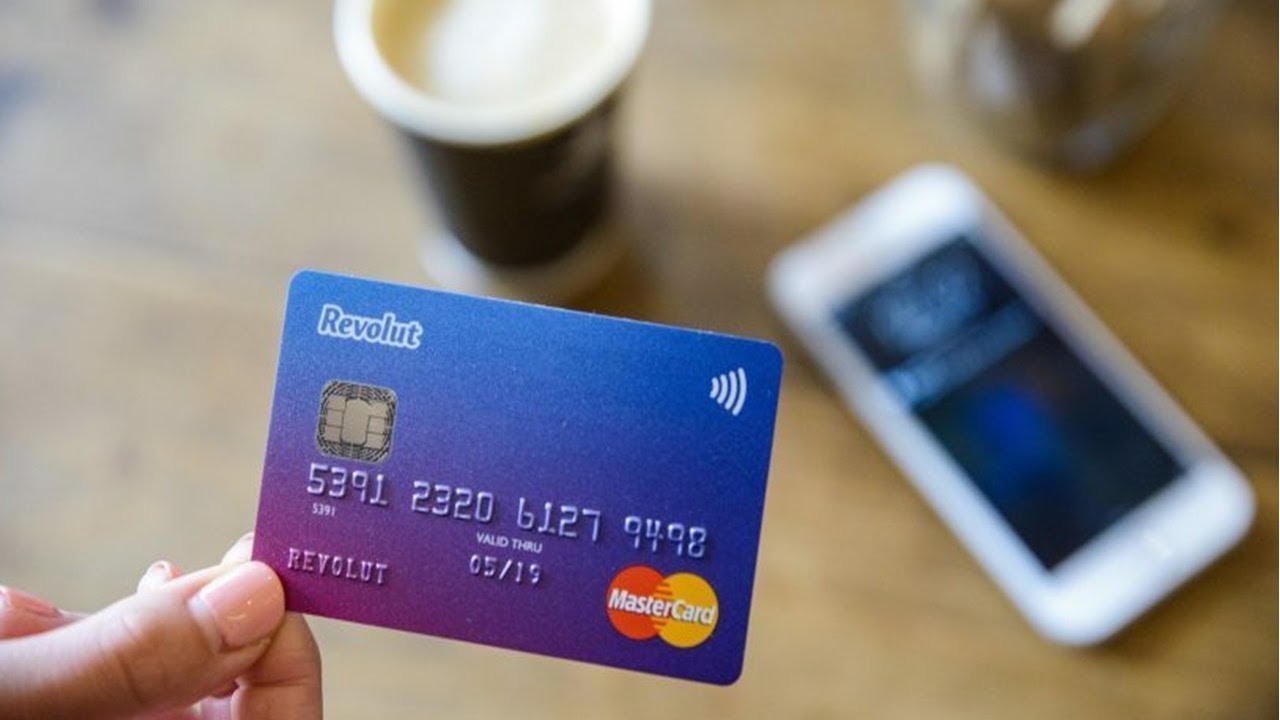
Bitcoin Trading Psychology Training Program 5 Powerful Steps
The volatile world of Bitcoin trading presents unique psychological challenges that can make or break even the most technically proficient traders. While mastering chart patterns and market analysis is crucial, trading psychology often determines the difference between consistent profits and devastating losses. Research indicates that over 80% of cryptocurrency traders lose money, with emotional decision-making being the primary culprit behind these failures.
Crypto trading psychology encompasses the mental and emotional aspects that influence every trading decision. From the paralyzing fear during market crashes to the intoxicating greed during bull runs, emotions can cloud judgment and lead to irrational choices. The cryptocurrency market’s 24/7 nature and extreme volatility amplify these psychological pressures, creating a perfect storm for emotional trading mistakes.
Bitcoin psychology is essential because cryptocurrency markets are driven heavily by sentiment and crowd behavior. Unlike traditional assets, Bitcoin’s price movements often reflect collective emotions rather than fundamental valuations. This creates unique psychological patterns that successful traders must recognize and navigate effectively.
Professional traders distinguish themselves not through superior market predictions but through disciplined emotional control in trading. They develop systematic approaches to manage fear, greed, FOMO (Fear of Missing Out), and other psychological biases that plague amateur traders. By implementing proven trading psychology techniques, traders can maintain objectivity during turbulent market conditions.
This comprehensive Bitcoin trading psychology training program provides five powerful steps to develop the mental resilience necessary for cryptocurrency trading success. Whether you’re battling analysis paralysis, struggling with position sizing decisions, or finding yourself repeatedly buying high and selling low, these evidence-based strategies will transform your trading approach. The program combines behavioral finance principles with practical exercises designed specifically for the unique challenges of Bitcoin and cryptocurrency markets.
1. The Psychological Foundations of Bitcoin Trading

The Science Behind Trading Psychology
Trading psychology is rooted in behavioral finance, which studies how cognitive biases and emotions influence financial decisions. Unlike traditional economic theories that assume rational decision-making, behavioral finance recognizes that humans are inherently emotional beings whose choices are often driven by psychological factors rather than logical analysis.
Bitcoin trading psychology is particularly complex due to the cryptocurrency market’s unique characteristics. The market’s extreme volatility triggers intense emotional responses that can override rational thinking. When Bitcoin’s price swings by 10% or more in a single day, traders experience physiological stress responses similar to those encountered in life-threatening situations.
Common Psychological Biases in Crypto Trading
Confirmation bias leads traders to seek information that supports their existing beliefs while ignoring contradictory evidence. In cryptocurrency trading, this might manifest as only reading bullish news when holding long positions or dismissing positive developments when short. This selective information processing prevents traders from making objective assessments of market conditions.
Loss aversion is another critical bias where traders feel the pain of losses more intensely than the pleasure of equivalent gains. This psychological tendency causes traders to hold losing positions too long, hoping to break even, while quickly selling winning trades. In Bitcoin markets, where volatility is high, loss aversion can be particularly destructive to long-term profitability.
Anchoring bias occurs when traders fixate on specific price levels or information, using them as reference points for all subsequent decisions. Bitcoin traders often anchor to all-time highs or their entry prices, making it difficult to adapt to changing market conditions.
The Neuroscience of Fear and Greed
The human brain’s fear response is controlled by the amygdala, which triggers fight-or-flight reactions when perceiving threats. In crypto trading psychology, market downturns activate this same fear response, leading to panic selling and irrational decision-making. This neurological process helps traders recognize when emotions are overwhelming rational analysis.
Conversely, greed activates the brain’s reward system, releasing dopamine and creating addictive-like behaviors. During Bitcoin bull runs, this neurochemical response can lead to overconfidence, excessive risk-taking, and FOMO-driven purchases at market tops.
Building Psychological Awareness
Successful Bitcoin psychology management begins with self-awareness. Traders must learn to identify their emotional states and understand how these feelings influence their decision-making processes. This involves recognizing physical symptoms of stress, monitoring thought patterns, and acknowledging when emotions are driving trading decisions rather than analysis.
Keeping a detailed trading journal that includes emotional states alongside technical analysis helps develop this awareness. By documenting feelings before, during, and after trades, traders can identify patterns and triggers that lead to poor decisions.
2. Mastering Emotional Control and Discipline
Developing Emotional Intelligence
Emotional control in trading requires developing high emotional intelligence (EQ), which includes self-awareness, self-regulation, motivation, empathy, and social skills. For Bitcoin traders, the most critical components are self-awareness and self-regulation, as these directly impact trading performance.
Self-awareness involves recognizing emotional states in real-time and how these emotions affect trading decisions. Self-regulation encompasses managing these emotions effectively, preventing them from driving impulsive actions that can damage trading accounts.
Implementing Systematic Decision-Making Processes
Creating systematic processes removes emotional decision-making from trading. Trading psychology techniques emphasize the importance of predetermined rules for entry, exit, position sizing, and risk management. When every decision is guided by established criteria rather than momentary emotions, traders maintain consistency regardless of market conditions.
Pre-market preparation rituals help establish the right mental state for trading. This might include reviewing market analysis, confirming trading plans, and setting specific goals for the session. These routines create psychological anchors that promote disciplined behavior throughout the trading day.
Stress Management Techniques
Crypto trading psychology requires effective stress management due to the market’s high-pressure environment. Physical exercise, meditation, and proper sleep are fundamental for maintaining mental clarity and emotional stability. Regular exercise releases endorphins that counteract stress hormones, while meditation improves focus and emotional regulation.
Breathing techniques provide immediate stress relief during volatile market conditions. Deep, controlled breathing activates the parasympathetic nervous system, reducing anxiety and promoting clearer thinking. Simple techniques like the 4-7-8 breathing pattern can be implemented directly at the trading desk.
Setting Boundaries and Limits
Establishing clear boundaries prevents emotional trading from spiraling out of control. This includes setting maximum daily loss limits, predetermined trading hours, and rules for when to step away from the markets. Bitcoin trading psychology management requires treating these boundaries as non-negotiable rules rather than flexible guidelines.
Position sizing rules based on risk tolerance rather than profit potential help maintain emotional equilibrium. When traders risk amounts they can comfortably afford to lose, the emotional impact of losses diminishes significantly, enabling more objective decision-making.
The Power of Routine and Ritual
Successful traders develop consistent routines that promote psychological stability. Pre-trading rituals might include market analysis, goal setting, and mental preparation exercises. Post-trading reviews help process the day’s events and extract learning opportunities while emotions are still fresh. These routines create psychological safety nets that prevent impulsive decisions during stressful market conditions. When facing uncertainty, traders can rely on established processes rather than emotional reactions.
3. Developing a Systematic Risk Management Framework
The Psychology of Risk Perception
Risk management psychology in Bitcoin trading involves how traders perceive and respond to different types of risk. Humans naturally underestimate familiar risks while overestimating unfamiliar ones. In cryptocurrency markets, this can lead to complacency during stable periods and panic during volatile phases.
Effective crypto trading psychology requires reframing risk as a manageable component of trading rather than something to be feared or ignored. Risk management becomes a mathematical exercise rather than an emotional decision when traders understand probability, expected value, and position sizing principles.
Creating Systematic Position Sizing Rules
Position sizing is one of the most critical aspects of trading psychology techniques, yet it’s often approached emotionally rather than systematically. Successful Bitcoin traders use mathematical formulas like the Kelly Criterion or fixed percentage methods to determine appropriate position sizes based on win rates and average returns.
The psychological benefit of systematic position sizing is that it removes the temptation to “bet big” on high-confidence trades or reduce position sizes after losses. Consistency in position sizing prevents the emotional rollercoaster that comes from varying bet sizes based on feelings rather than facts.
Implementing Stop-Loss and Take-Profit Strategies
Emotional control in trading is most challenged when positions move against expectations. Pre-planned stop-loss levels remove the emotional decision of when to exit losing trades. However, many traders struggle with stop-loss implementation due to the psychological pain of realizing losses.
The key to effective stop-loss psychology is reframing these exits as successful risk management rather than failures. Each stop-loss execution preserves capital for future opportunities and prevents small losses from becoming account-destroying disasters.
Take-profit strategies address the opposite psychological challenge – the greed that prevents traders from securing profits. Pre-planned profit-taking levels help overcome the “what if it keeps going up” mentality that often turns winning trades into losses.
Diversification and Portfolio Psychology
Bitcoin psychology often leads traders to concentrate heavily on cryptocurrency positions, creating excessive portfolio risk. Proper diversification across different asset classes, trading strategies, and time frames reduces psychological pressure by preventing over-dependence on any single trade or market movement.
Portfolio diversification also addresses the confirmation bias that leads traders to only see opportunities in their preferred markets. By maintaining exposure to multiple trading approaches, traders develop more balanced perspectives and reduce emotional attachment to specific positions.
The Concept of Maximum Tolerable Loss
Every trader must define their maximum tolerable loss – the point beyond which continued trading would cause severe psychological or financial damage. This concept is crucial for crypto trading psychology because it provides a psychological circuit breaker that prevents catastrophic losses.
Respecting this limit requires honest self-assessment of financial resources, emotional tolerance, and life priorities. Traders who exceed their maximum tolerable loss often experience psychological trauma that impairs future decision-making abilities.
4. Overcoming FOMO, Fear, and Greed Cycles
The FOMO Psychology
Fear of Missing Out (FOMO) is perhaps the most destructive emotion in Bitcoin trading psychology. FOMO drives traders to enter positions at market tops, abandon profitable strategies to chase trends, and make impulsive decisions based on social media hype rather than analysis.
FOMO stems from the psychological principle of social proof, where individuals look to others’ behavior to determine appropriate actions. In cryptocurrency communities, this creates feedback loops where rising prices attract more buyers, further pushing prices higher until unsustainable levels trigger corrections.
Developing FOMO Resistance Strategies
Trading psychology techniques for overcoming FOMO include maintaining detailed watchlists of potential opportunities, so traders always have alternative setups available. When traders know they have other high-probability opportunities waiting, the urgency to enter current market movements diminishes significantly.
Creating specific criteria for trade entry helps overcome FOMO by requiring systematic evaluation rather than emotional reactions. If a potential trade doesn’t meet predetermined criteria, traders must pass regardless of how attractive the opportunity appears emotionally.
Managing Fear-Based Decision Making
Fear in crypto trading psychology manifests in multiple ways: fear of losses, fear of missing profits, fear of being wrong, and fear of volatility. Each type of fear requires different management approaches, but all benefit from systematic preparation and clear decision-making frameworks.
Fear of losses can be addressed through proper position sizing and risk management. When traders risk only what they can comfortably lose, the fear of individual trade losses diminishes significantly. This psychological comfort enables more objective analysis and decision-making.
Breaking the Greed Cycle
Greed in Bitcoin psychology creates several destructive behaviors: over-leveraging positions, avoiding profit-taking, revenge trading after losses, and abandoning proven strategies for get-rich-quick schemes. Greed’s psychological triggers help traders develop countermeasures.
Greed often intensifies after successful trades, leading to overconfidence and increased risk-taking. Systematic profit-taking rules and position sizing formulas help maintain discipline during winning streaks when greed is most powerful.
Creating Emotional Circuit Breakers
Emotional control in trading requires implementing circuit breakers that automatically remove traders from decision-making when emotions become overwhelming. These might include daily loss limits, mandatory cooling-off periods after significant losses, or predetermined break schedules during volatile market conditions.
The key to effective circuit breakers is implementing them during calm periods when rational thinking prevails. Trying to create emotional safeguards during stressful market conditions is far less effective than establishing them proactively.
The Power of Patience and Selectivity
Successful trading psychology emphasizes quality over quantity in trade selection. Patient traders wait for high-probability setups that meet their criteria rather than forcing trades due to boredom or pressure to be active in markets.
Developing patience requires that missing individual opportunities is less costly than entering poor-quality trades. In Bitcoin’s volatile markets, patience often means avoiding the temptation to trade every price movement and instead focusing on the highest-probability scenarios.
5. Building Mental Resilience and Long-term Success Mindsets

Developing a Growth Mindset
Bitcoin trading psychology success requires adopting a growth mindset that views losses and mistakes as learning opportunities rather than failures. Traders with growth mindsets understand that skill development is an ongoing process requiring continuous adaptation and improvement.
Fixed mindsets, conversely, lead traders to view losses as personal failures and evidence of inadequacy. This perspective creates emotional baggage that interferes with objective analysis and prevents the honest self-reflection necessary for improvement.
Creating Learning Systems
Successful crypto trading psychology involves systematic learning processes that extract maximum value from both winning and losing trades. This includes detailed trade journals, regular performance reviews, and structured analysis of decision-making processes.
Learning systems help traders identify patterns in their behavior, recognize recurring mistakes, and track improvement over time. Without systematic learning processes, traders tend to repeat the same psychological errors regardless of experience level.
Building Psychological Capital
Psychological capital consists of confidence, hope, optimism, and resilience – all crucial components of trading psychology techniques. Confidence comes from proven competence and systematic preparation. Hope maintains motivation during difficult periods. Optimism enables traders to see opportunities where others see only problems. Resilience helps traders recover from setbacks without permanent damage to their psychological state.
Building psychological capital requires celebrating small wins, maintaining perspective during losses, focusing on process improvements rather than just outcomes, and developing supportive relationships within the trading community.
Stress Inoculation Training
Emotional control in trading benefits from stress inoculation training, where traders gradually expose themselves to increasingly challenging market conditions while practicing psychological coping strategies. This might involve starting with small position sizes during volatile periods and gradually increasing exposure as confidence and skill develop.
Stress inoculation helps traders develop automatic responses to market pressure, reducing the cognitive load during critical decision-making moments. When psychological responses become habitual, traders can maintain composure during the most challenging market conditions.
Long-term Perspective Development
Bitcoin psychology often suffers from short-term thinking that prioritizes immediate gratification over long-term success. Developing a long-term perspective requires that successful trading is a marathon rather than a sprint, with consistent small wins accumulating into significant returns over time.
Long-term thinking helps traders avoid the psychological trap of trying to make up losses quickly through increased risk-taking. Instead, they focus on maintaining steady progress through consistent application of proven principles and techniques.
Building Support Systems
Psychological resilience in trading benefits significantly from strong support systems. This might include mentorship relationships, trading communities, professional counseling, or simply friends and family who understand the challenges of trading.
Support systems provide ean xternal perspective during emotionally charged situations, helping traders recognize when emotions are compromising their judgment. They also offer encouragement during difficult periods when self-doubt might otherwise lead to abandoning effective strategies.
Continuous Skill Development
Mental resilience requires acknowledging that crypto trading psychology skills, like technical analysis skills, require continuous development and refinement. Markets evolve, new psychological challenges emerge, and personal circumstances change, all requiring adaptive responses.
Successful traders invest in ongoing psychological education through books, courses, workshops, and professional development activities. This commitment to continuous learning maintains the mental flexibility necessary for long-term trading success.
Also Read: Unlock 10 Winning Bitcoin Trading Strategies Today
Conclusion
Mastering Bitcoin trading psychology through this five-step training program provides the mental foundation necessary for cryptocurrency trading success. By psychological foundations, developing emotional control, implementing systematic risk management, overcoming destructive emotional cycles, and building long-term resilience, traders can significantly improve their performance and consistency.
The volatile nature of crypto trading psychology demands disciplined approaches that prioritize emotional intelligence alongside technical analysis. Success in Bitcoin markets ultimately depends less on predicting price movements and more on maintaining psychological equilibrium during the inevitable ups and downs of trading.
Traders who commit to developing these trading psychology techniques will find themselves better equipped to navigate the complex emotional landscape of cryptocurrency markets while building sustainable, profitable trading careers.







